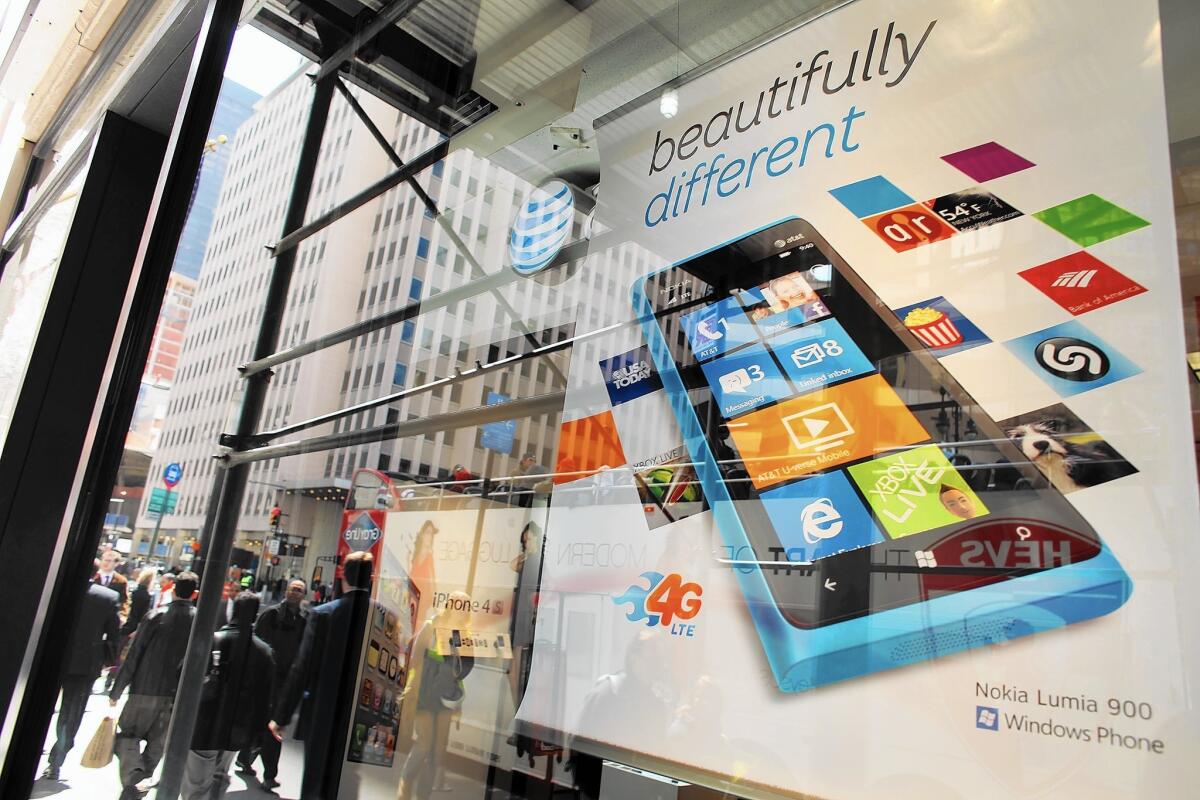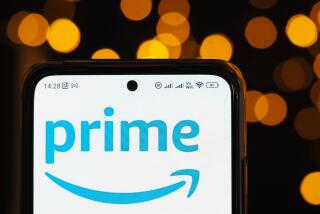New cell service pricing strategies show how industry is changing

- Share via
When I say “AT&T” and “Verizon,” what comes to mind?
Most of us might say a cellphone company. But the truth is, companies like T-Mobile and Sprint are really in business to sell a wireless service, like the ability to make voice calls and use mobile data. That’s what they have always been. And it’s becoming more apparent than ever, with moves by these companies to stop supporting two-year contracts and subsidizing the cost of a phone.
T-Mobile was the first to take that step. Since then, so has AT&T. Although it still offers two-year contracts, customers have to work hard to get one; the company has been aggressively promoting an alternative pricing model, AT&T Next. Sprint now lets customers lease its phones for a monthly charge, rather than buying. And last week, Verizon also got on board with the change that is sweeping the industry.
Now, new customers pay for their phones in full upfront or in monthly installments, but separate from their cellular service. (You’re also being encouraged to bring your own phone instead of buying a new one, which will eliminate those device payments altogether.) That’s a big change from the previous model, in which customers often paid a discounted upfront price for the phone (say, $200 for an iPhone) and then received a single monthly bill that covered the remaining cost of the phone and the service together.
The effect of the new plans on consumers won’t fully be felt for some time. It will take a while for some people to run out their old contracts and be faced with the new options hitting the market. But it’s safe to say that we are at the crest of a sea change in the wireless industry — one that will uncover just how mistaken we all were about how the business works.
The fact that cellphone companies are, more accurately, wireless companies is only the first big thing that this new pricing strategy will reveal. The old term is a holdover from the era when the only place to get a cellphone was from the likes of AT&T and Verizon, but that has completely changed now. For years, you’ve been able to buy an iPhone directly from Apple — arguably a real cellphone company in the sense that it actually makes cellphones — or an Android phone from Google. You can even take those devices with you from carrier to carrier.
We’re also about to confront, in a very direct way, the actual cost of our devices. Consumers who thought an iPhone was really as low as $200 are in for some sticker shock when they find out that it’s more like $649. Just as insurance companies shield us from the true cost of healthcare, device subsidies have shielded many Americans from the true price of their devices.
That knowledge could prompt consumers to change the way they think about their next smartphone upgrade. Will consumers start favoring cheaper smartphones, putting pressure on premium smartphone makers such as Apple to make their devices more affordable? After realizing how much we’re truly paying for cell service, will we begin to expect better service and treatment? Will it change how much data people buy?
Lastly, consumers will have a better idea now of how wireless companies make money: by providing access to mobile data, not selling phones, and certainly not through voice calls or text messaging, which are more often given to you on an unlimited basis with a data plan. Providers will also increasingly earn their keep by offering exclusive content; Verizon and AT&T have made moves in this direction by acquiring AOL and DirecTV, respectively.
Clearing up these misconceptions about “cellphone companies” is a good thing. What the industry’s new era of pricing gives us is a clearer, more accurate picture of what it means to be a wireless provider in 2015. And that knowledge is going to make us more empowered consumers.
Fung covers technology for the Washington Post.
More to Read
Inside the business of entertainment
The Wide Shot brings you news, analysis and insights on everything from streaming wars to production — and what it all means for the future.
You may occasionally receive promotional content from the Los Angeles Times.










